Cleavage
c. Blastomere size: ‘stage specific’ versus ‘non-stage specific’
c. Blastomere size: ‘stage specific’ versus ‘non-stage specific’
-
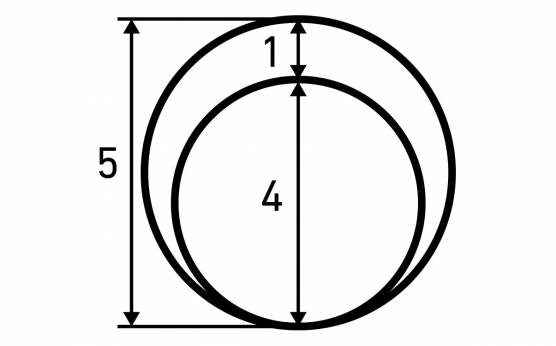
Diagram 1
A diagram illustrating the expected cell size of a cleavage stage embryo: a human 2-cell embryo should contain two equal blastomeres of the size of the 2-cell stage and are thereby stage specific. Unequal blastomeres at the 2-cell stage (>25% difference in the diameter size of the smallest cell, i.e. less than a 1:4 proportion) are not 2-cell stage specific. The same rule can be applied to 4- and 8-cell embryos. The numbers show proportions of diameter size.
-
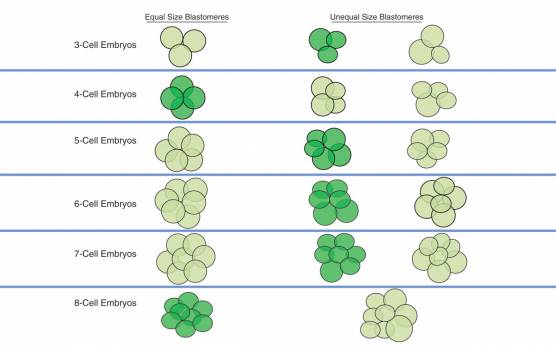
Diagram 2
A diagram illustrating the concept of stage-specific versus non-stage-specific cleavage patterns. The dark green color indicates stage-specific cleavage stage embryos, whereas the light green color indicates non-stage-specific cleavage stage embryos.
-

Figure 243
A 2-cell embryo with evenly sized blastomeres and no fragmentation on Day 2. The blastomeres are stage-specific cell size. The embryo was transferred but did not result in a pregnancy.
-
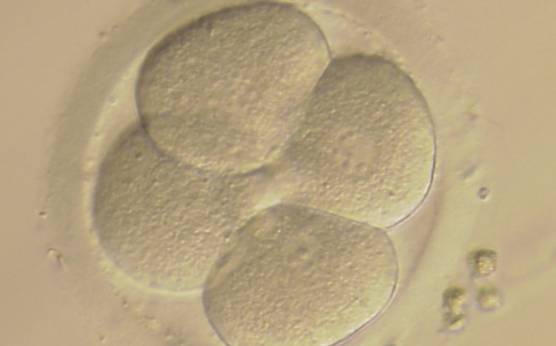
Figure 244
A 4-cell embryo with evenly sized blastomeres and no fragmentation on Day 2. The blastomeres are stage-specific cell size. Notice the clover shape arrangement of the blastomeres. It was transferred and implanted.
-

Figure 245
An 8-cell embryo with evenly sized blastomeres and no fragmentation on Day 3. The blastomeres are stage-specific cell size. It was transferred and resulted in a pregnancy.
-
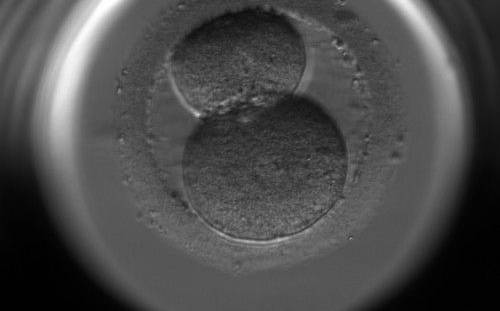
Figure 246
A 2-cell embryo with unevenly sized blastomeres on Day 2. The blastomeres are not stage-specific cell size.
-
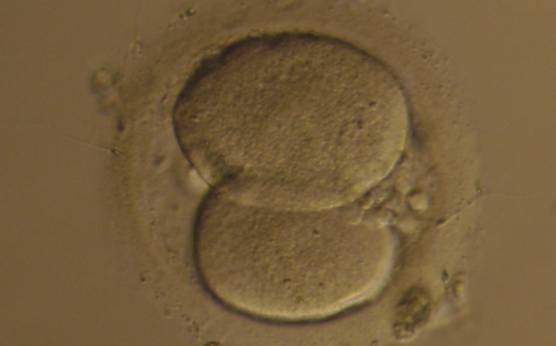
Figure 247
A 2-cell embryo with unevenly sized blastomeres and up to 10% fragmentation on Day 2. The blastomeres are not stage-specific cell size.
-
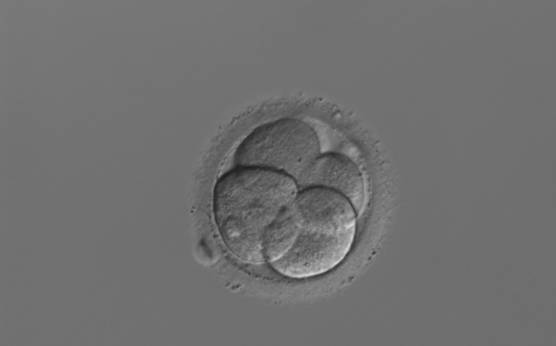
Figure 248
A 4-cell embryo with unevenly sized blastomeres on Day 2, with the cell to the right being 25% smaller than the cell to the left. The blastomeres are therefore not stage-specific cell size. The embryo was transferred and implanted.
-
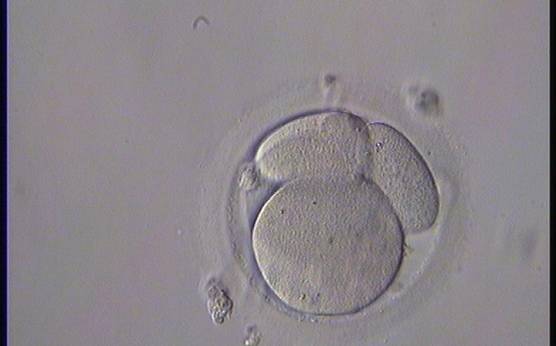
Figure 249
A 4-cell embryo with unevenly sized blastomeres on Day 2. One blastomere is indistinct in this view. The blastomeres are not stage-specific cell size.
-
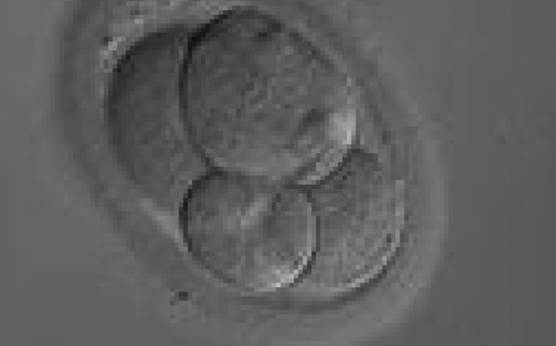
Figure 250
A 4-cell embryo with unevenly sized and irregular blastomeres with two blastomeres being larger than the other two. The blastomeres are not stage-specific cell size. Note that the ZP of this embryo is elongated.
-

Figure 251
A 4-cell embryo with unevenly sized blastomeres. The blastomeres are not stage-specific cell size.
-

Figure 252
An 8-cell embryo with unevenly sized blastomeres. The blastomeres are not stage-specific cell size. The embryo was transferred but did not result in a pregnancy.
-
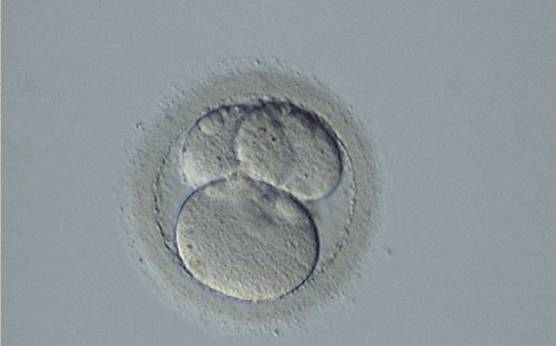
Figure 253
A 3-cell embryo with one large and two small blastomeres on Day 2. The blastomeres are stage-specific cell size. The embryo was transferred but failed to implant.
-
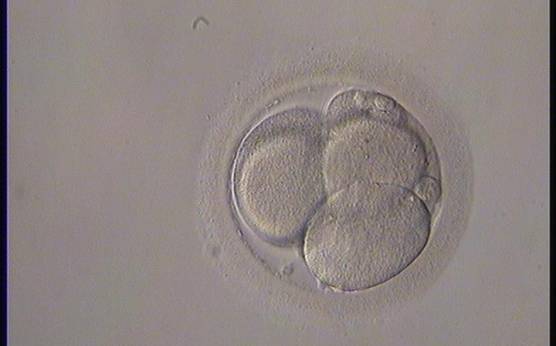
Figure 254
A 5-cell embryo with three large and two small blastomeres. The blastomeres are stage-specific cell size.
-
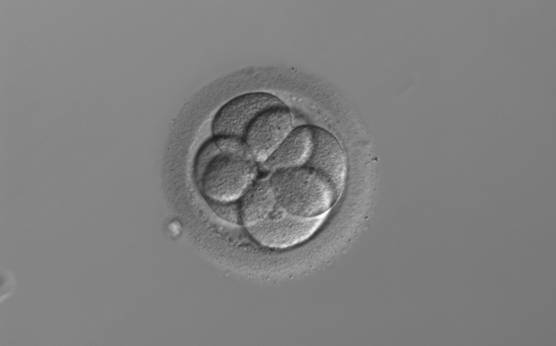
Figure 255
A 6-cell embryo with two large and four small blastomeres. The blastomeres are stage-specific cell size.
-
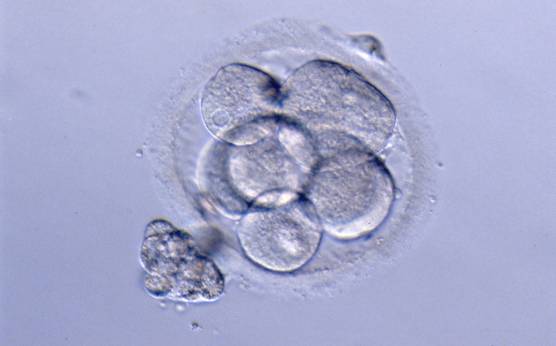
Figure 256
A 7-cell embryo with one large and six small blastomeres. The blastomeres are stage-specific cell size.
-
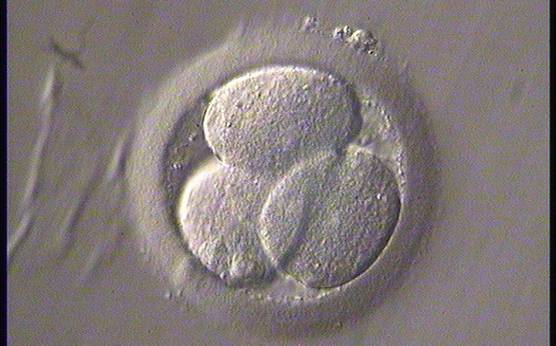
Figure 257
A 3-cell embryo with three blastomeres of the same size at 26 h after insemination. The blastomeres are not stage-specific cell size.
-
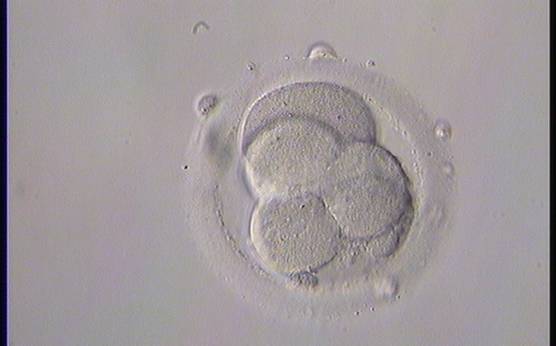
Figure 258
A 5-cell embryo with two large and three small blastomeres instead of three large and two small blastomeres; therefore, not stage-specific cell size.
-
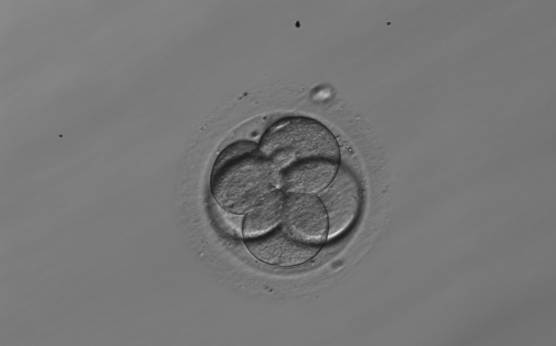
Figure 259
A 5-cell embryo with two large and three small blastomeres instead of three large and two small blastomeres therefore not stage-specific cell size.
-
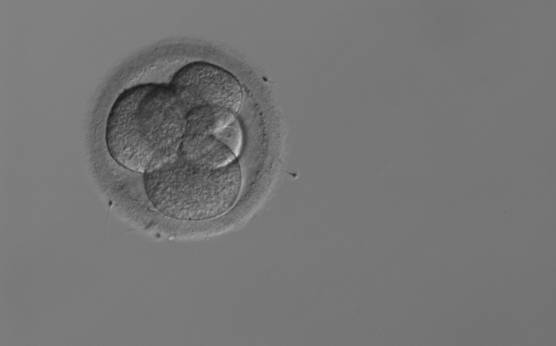
Figure 260
A 5-cell embryo with four large and one small blastomeres instead of three large and two small blastomeres; therefore, not stage-specific cell size.
-
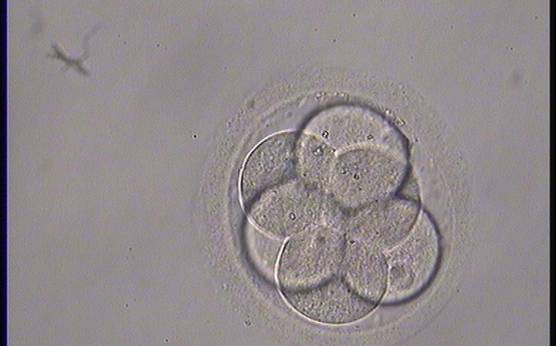
Figure 261
A thawed 6-cell embryo with six blastomeres of the same size rather than two large and four smaller blastomeres; therefore, not stage-specific cell size.
-
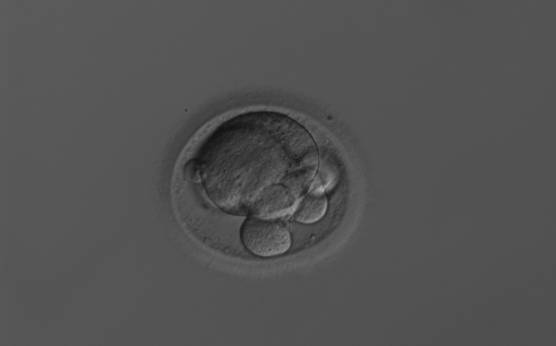
Figure 262
A 6-cell embryo with two very large and four very small blastomeres. The extreme size difference between the large and small blastomeres makes this embryo not stage specific.
-
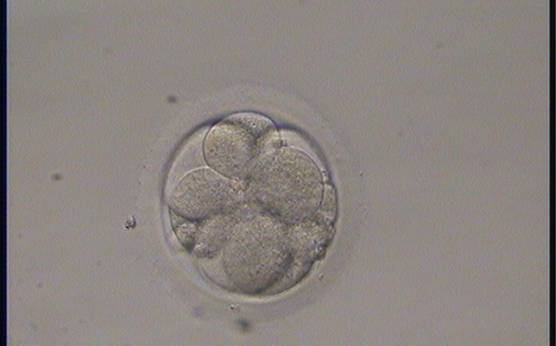
Figure 263
A 7-cell embryo with three large and four small blastomeres instead of one large and six small blastomeres; therefore, not stage-specific cell size. One blastomere shows multinucleation.